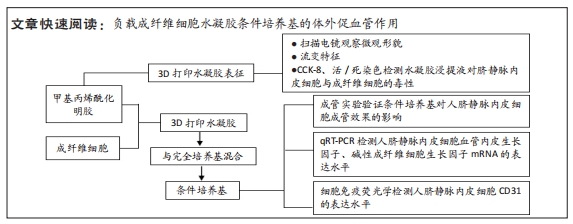[1] EMING SA, MURRAY PJ, PEARCE EJ. Metabolic orchestration of the wound healing response. Cell Metab. 2021;33(9):1726-1743.
[2] TEOH JH, MOZHI A, SUNIL V, et al. 3D Printing Personalized, Photocrosslinkable Hydrogel Wound Dressings for the Treatment of Thermal Burns. Adv Funct Mater. 2021;31(48):2105932.
[3] R IBAÑEZ RI, DO AMARAL RJFC, REIS RL, et al. 3D-Printed Gelatin Methacrylate Scaffolds with Controlled Architecture and Stiffness Modulate the Fibroblast Phenotype towards Dermal Regeneration. Polymers (Basel). 2021;13(15):2510.
[4] MARTIN P, NUNAN R. Cellular and molecular mechanisms of repair in acute and chronic wound healing. Br J Dermatol. 2015;173(2):370-378.
[5] LING Z, ZHAO J, SONG S, et al. Chitin nanocrystal-assisted 3D bioprinting of gelatin methacrylate scaffolds Regen Biomater. 2023;10:rbad058.
[6] XUE M, JACKSON CJ. Extracellular Matrix Reorganization During Wound Healing and Its Impact on Abnormal Scarring. Adv Wound Care. 2015;4(3):119-136.
[7] LIU X, WANG X, ZHANG L, et al. 3D Liver Tissue Model with Branched Vascular Networks by Multimaterial Bioprinting. Adv Healthc Mater. 2021;10(23):e2101405.
[8] GUTIERREZ AM, FRAZAR EM, X KLAUS MV, et al. Hydrogels and Hydrogel Nanocomposites: Enhancing Healthcare through Human and Environmental Treatment. Adv Healthc Mater. 2022;11(7):e2101820.
[9] CHOI SW, GUAN W, CHUNG K. Basic principles of hydrogel-based tissue transformation technologies and their applications. Cell. 2021;184(16):4115-4136.
[10] GUIMARÃES CF, AHMED R, MARQUES AP, et al. Engineering Hydrogel-Based Biomedical Photonics: Design, Fabrication, and Applications. Adv Mater. 2021; 33(23): e2006582.
[11] LIU C, WANG Z, WEI X, et al. 3D printed hydrogel/PCL core/shell fiber scaffolds with NIR-triggered drug release for cancer therapy and wound healing. Acta Biomater. 2021;131:314-325.
[12] ARUNPRASERT K, PORNPITCHANARONG C, ROJANARATA T, et al. Bioinspired ketoprofen-incorporated polyvinylpyrrolidone/polyallylamine/ polydopamine hydrophilic pressure-sensitive adhesives patches with improved adhesive performance for transdermal drug delivery. Eur J Pharm Biopharm. 2022;181: 207-217.
[13] JIANG G, LI S, YU K, et al. A 3D-printed PRP-GelMA hydrogel promotes osteochondral regeneration through M2 macrophage polarization in a rabbit model. Acta Biomater. 2021;128:150-162.
[14] CHAN WW, YEO DCL, TAN V, et al. Additive Biomanufacturing with Collagen Inks. Bioengineering. 2020;7(3):66.
[15] ZHU M, WANG Y, FERRACCI G, et al. Gelatin methacryloyl and its hydrogels with an exceptional degree of controllability and batch-to-batch consistency. Sci Rep. 2019;9(1):6863.
[16] YUE K, TRUJILLO-DE SANTIAGO G, ALVAREZ MM, et al. Synthesis, properties, and biomedical applications of gelatin methacryloyl (GelMA) hydrogels. Biomaterials. 2015;73:254-271.
[17] LIU G, CHEN J, WANG X, et al. Functionalized 3D-Printed ST2/Gelatin Methacryloyl/Polcaprolactone Scaffolds for Enhancing Bone Regeneration with Vascularization. Int J Mol Sci. 2022;23(15):8347.
[18] PAN H, DENG L, HUANG L, et al. 3D-printed Sr2ZnSi2O7 scaffold facilitates vascularized bone regeneration through macrophage immunomodulation. Front Bioeng Biotechnol. 2022;10:1007535.
[19] MADDALUNO L, URWYLER C, WERNER S. Fibroblast growth factors: key players in regeneration and tissue repair. Development. 2017;144(22):4047-4060.
[20] CHOI E, KIM D, KANG D, et al. 3D-printed gelatin methacrylate (GelMA)/silanated silica scaffold assisted by two-stage cooling system for hard tissue regeneration. Regen Biomater. 2021;8(2):rbab001.
[21] KARAGEORGIOU V, KAPLAN D. Porosity of 3D biomaterial scaffolds and osteogenesis. Biomaterials. 2005;26(27):5474-5491.
[22] KIGEL B, RABINOWICZ N, VARSHAVSKY A, et al. Plexin-A4 promotes tumor progression and tumor angiogenesis by enhancement of VEGF and bFGF signaling. Blood. 2011;118(15):4285-4296.
[23] LOSI P, BRIGANTI E, ERRICO C, et al. Fibrin-based scaffold incorporating VEGF- and bFGF-loaded nanoparticles stimulates wound healing in diabetic mice. Acta Biomater. 2013;9(8):7814-7821.
[24] GU Z, ZHANG X, LI L, et al. Acceleration of segmental bone regeneration in a rabbit model by strontium-doped calcium polyphosphate scaffold through stimulating VEGF and bFGF secretion from osteoblasts. Mater Sci Eng C Mater Biol Appl. 2013;33(1):274-281.
[25] ELBIALY ZI, ASSAR DH, ABDELNABY A, et al. Healing potential of Spirulina platensis for skin wounds by modulating bFGF, VEGF, TGF-ß1 and α-SMA genes expression targeting angiogenesis and scar tissue formation in the rat model. Biomed Pharmacother. 2021;137:111349.
[26] CROSS MJ, CLAESSON-WELSH L. FGF and VEGF function in angiogenesis: signalling pathways, biological responses and therapeutic inhibition. Trends Pharmacol Sci. 2001;22(4):201-207.
|
